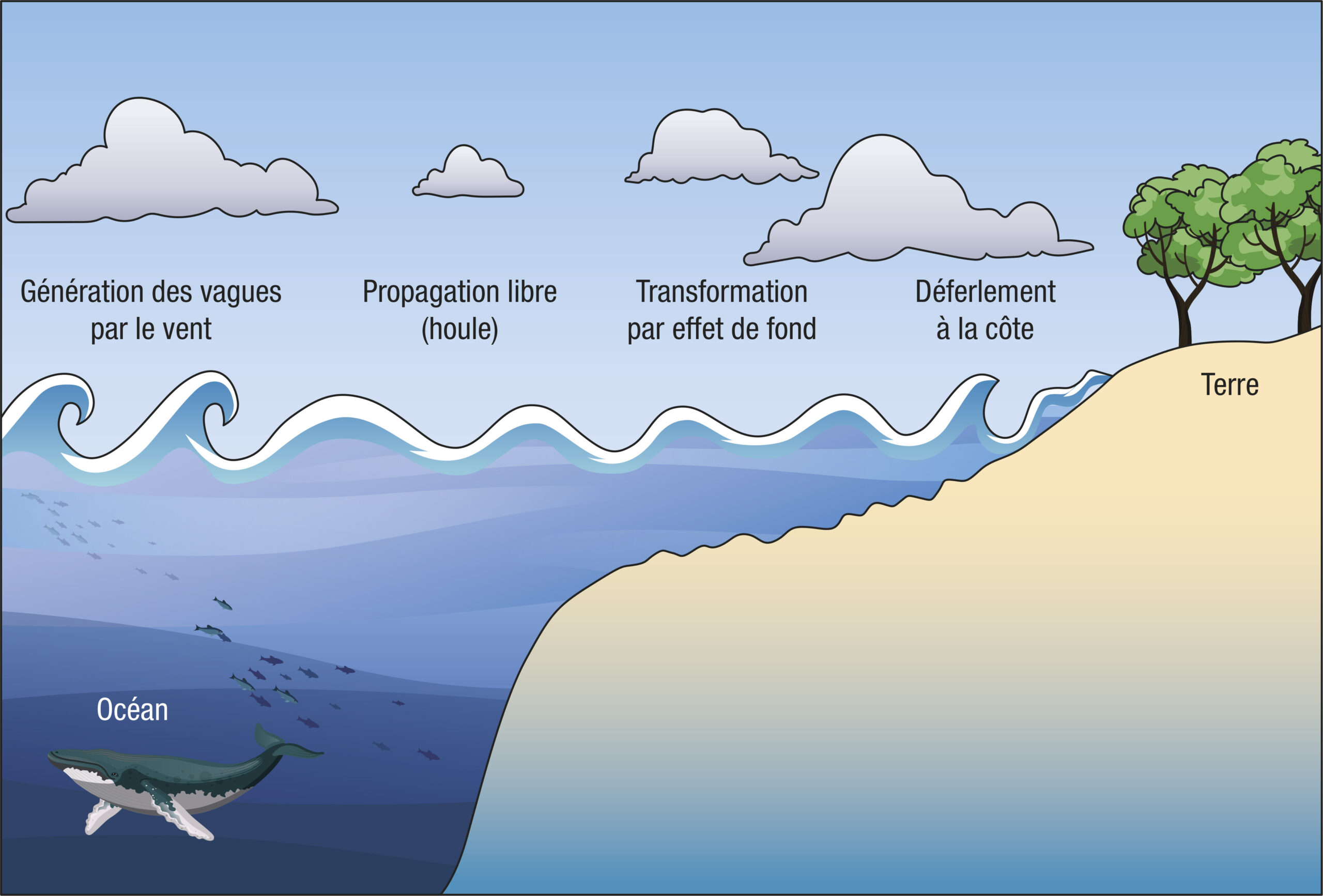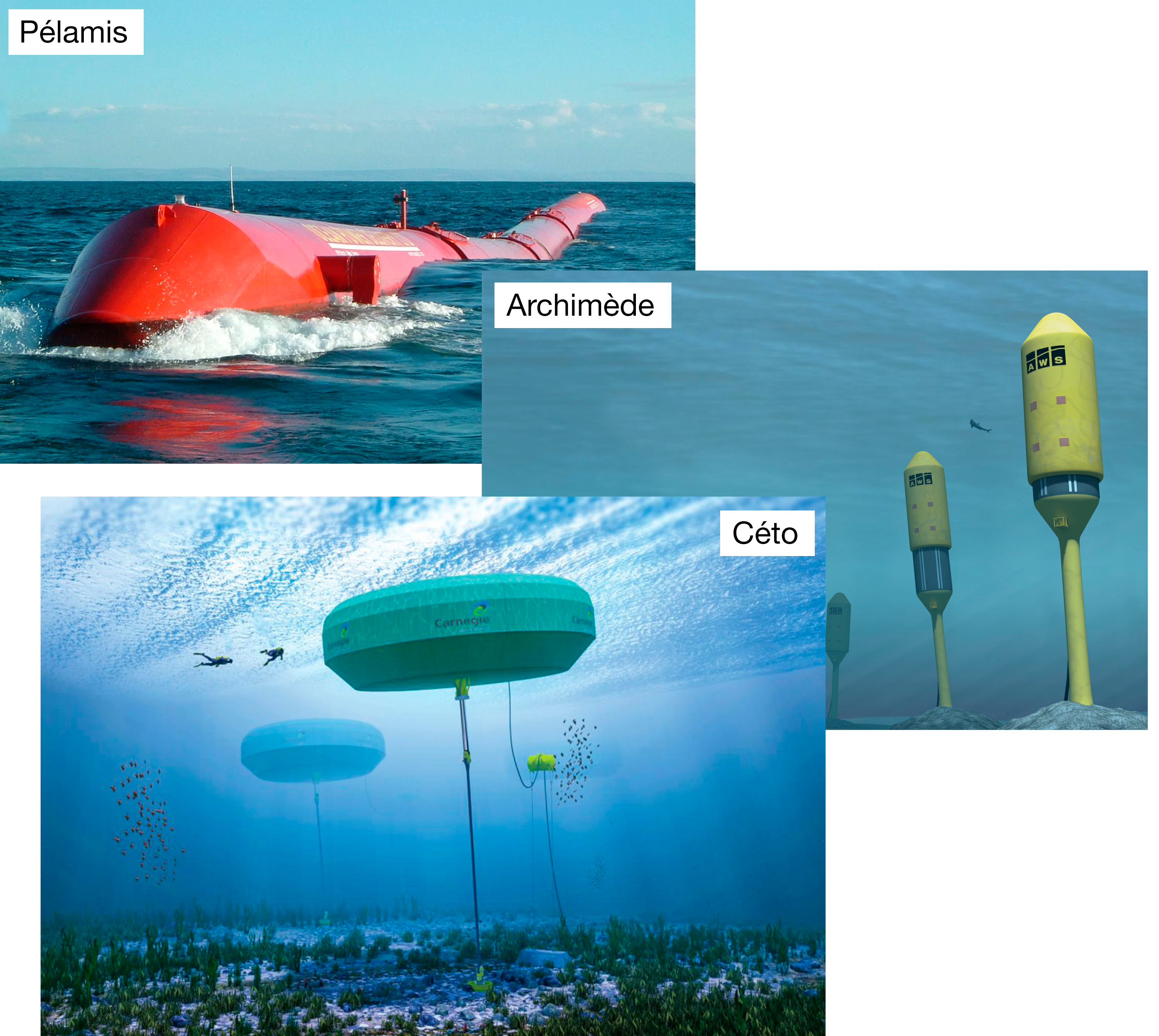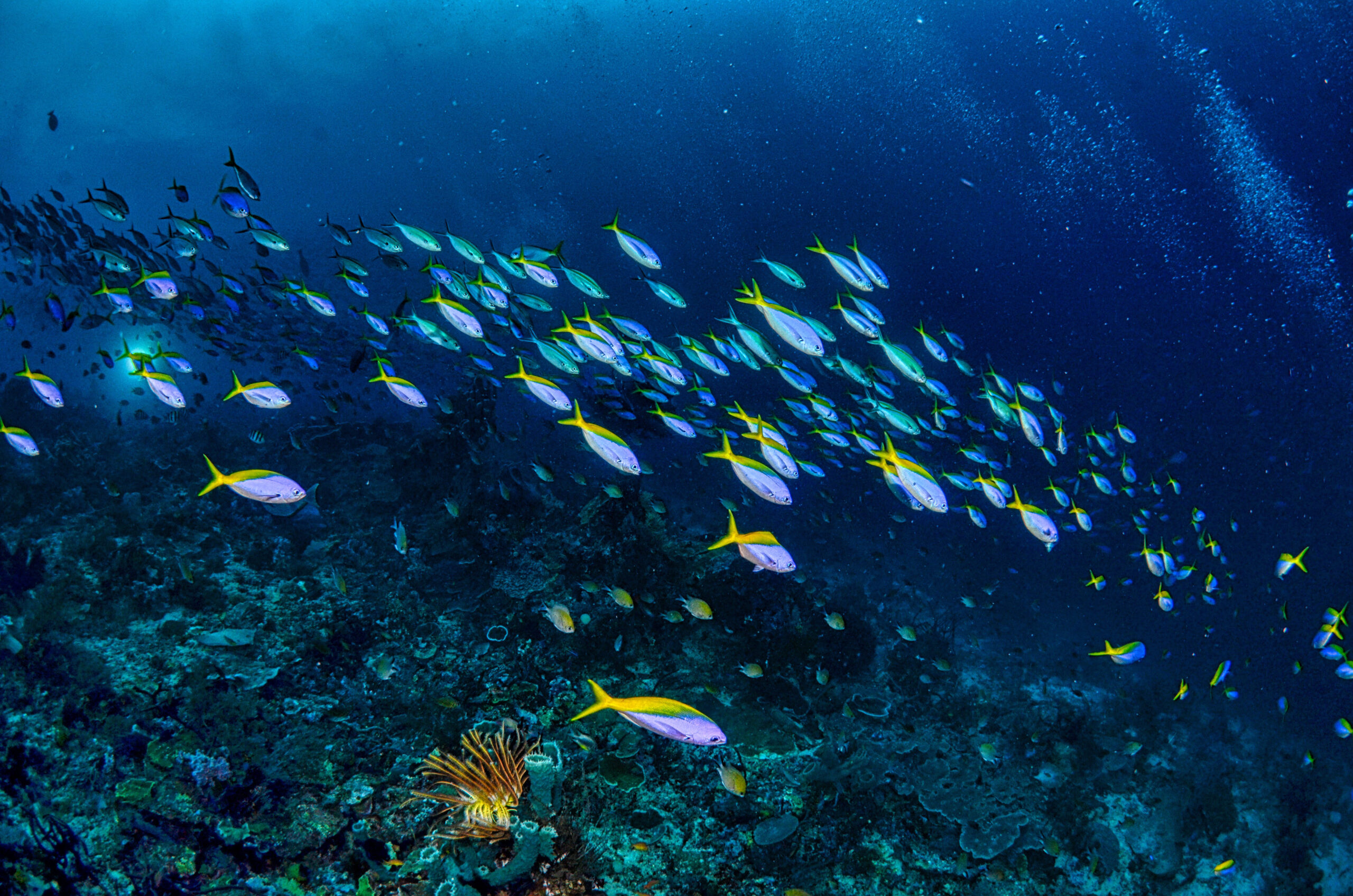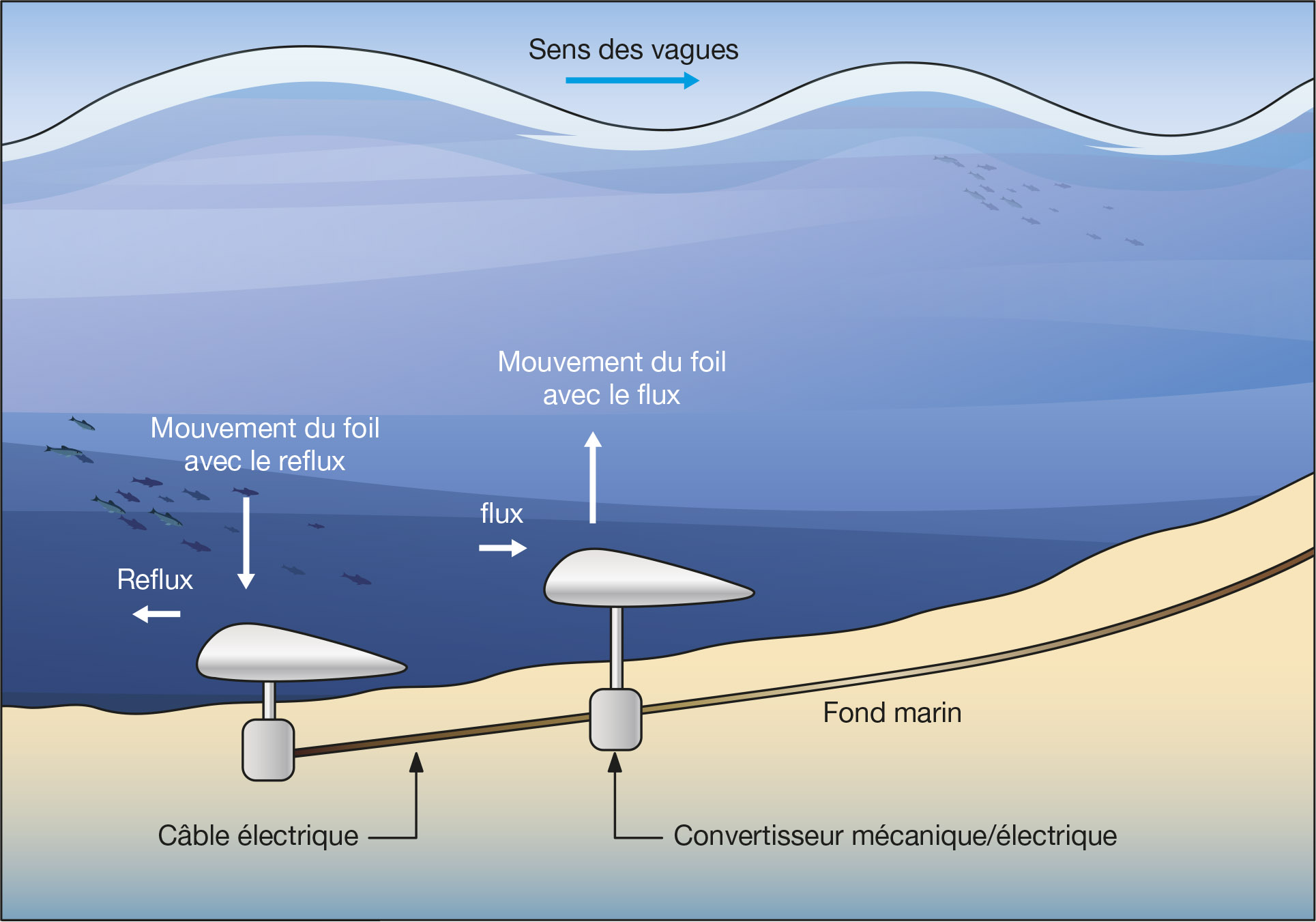Active Wave
The energy of water
Wave energy
Wave energy, or wave energy, is a renewable energy available 24 hours a day, unlike wind or solar.
The classic principle of wave power generation consists of recovering, offshore, the vertical movement of the wave as it passes.
Wave generation is continuous because the wave frequency is constant.


Problems with current installations
Current wave energy systems need to be large and installed far from the coast, to have an optimal yield of wave energy harvesting.
Examples of current installations:
- Pelamis (180 m long, 4 m in diameter, 1300 tons, etc.).
- The Keto or Archimedes systems (15 m in diameter, 40 tonnes, etc.).
The production of these systems is apparently important, but suffers from weaknesses.
Significant installation and operating costs:
- Installation far from the coast (500 m to 2 km);
- Deep anchorage (50 to 200 m);
- Very long power cable to reach the coast;
- Electrical power losses, at least 28%, due to the length of the cable;
- Facilities weakened during storms due to their large size;
Negative ecological impact:
- The systems installed in the park occupy a large surface and volume in the ocean and disturb the fauna and flora.


Innovative solution
Active Wave Foil recovers the movements of the waves, according to an innovative principle, close to the coast and a few meters deep.
How it works ? :
- When the flow passes over the upper part of the foil (hydrofoil), the water particles create a lift effect which allows the foil to rise in the water.
- The opposite movement is observed, during reflux, the foil descends into the water.
Strong points
- AWF is a small module;
- Installation in park of independent modules;
- Near the coast (20 to 50 m);
- Shallow anchorage (2 to 5 m);
- Reduced length power cable to reach the coast;
- Significant reduction in electrical power losses, less than 1.43%, due to the short length of the cable;
- Low impact of storms on the system (small size and located at the bottom of the water);
- Installation and maintenance at low cost (proximity to the coast).
- Systems installed in parks occupy only the surface at the bottom of the ocean and disturb the fauna and flora less;
- Guarantees sustainable and constant production (the failure of one or more modules does not interrupt the production of the park).
- Annual production potential of Active Wave Foil at least 2 times greater than any other renewable energy installation;
- Reduced installation cost;
- Lower maintenance cost because the forces involved are much weaker.
